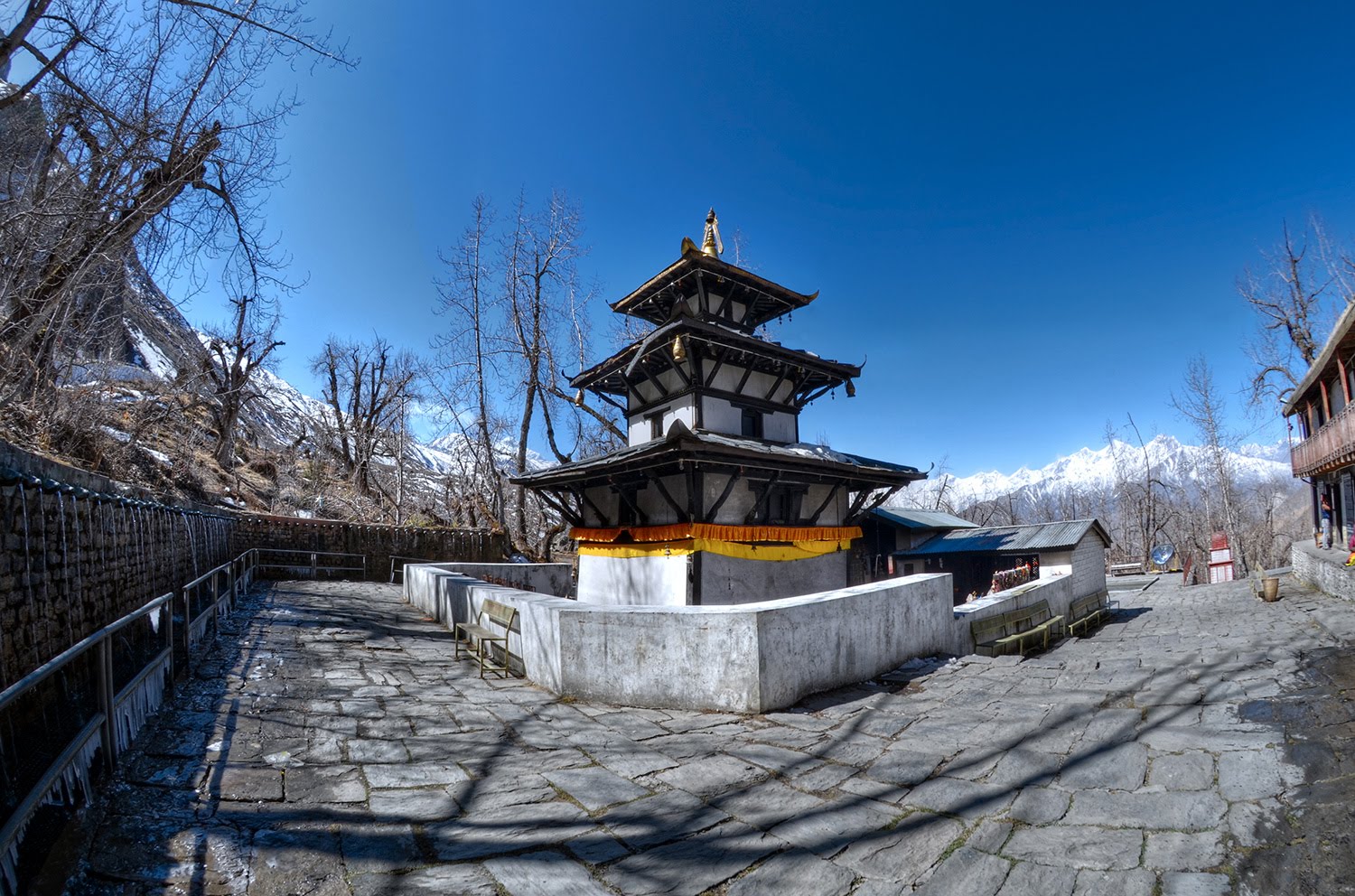
Why Visit the Muktinath
Situated in Nepal, the holy Multipath Temple has a prestigious position in Hinduism and Buddhism. As per Hindu mythology, it’s the destination of moksha. Basically, here, people worship Lord Vishnu as Mokshanath or Muktinath. As per Hindu mythology, the curse of Vrinda converted Vishnju into Shaligram. It is the place where he got rid of the curses, and so devotees worship him here as the god Muktinath. Shaligram is the holiest stone in Hinduism. ON the river bed of Gandaki, you may find the Shaligram stones that you should use to worship Lord Vishnu.
This holy temple is situated in the Muktinath valley which is on the foot of Thorong La mountain pass in Mustang, Nepal. Built at the altitude of 3800 m, this temple is one of the highest temples in the world. The temple location is very closer to the village Ranipura. Most of the people call this village as “Muktinath Village by mistake. Mukti Kshetra is the term that Hindus use for this temple. The meaning of Mukti Kshetra means place of Moksh.
This place is a very important religious place not just because of one or two reasons, but because of millions of reasons that you can’t count on your fingers. You may be heard of Shaktipeeth. It is a very auspicious place for bhaktas of goddess Shakti. As per belief, Shaktipeeths are places where body parts of Satti Devi or Mata Parvati cut by lord Vishnu fall. The temple is one of the Shaktipeeth, having the name "Mahadevi.
Here, you can see the 51 Shakti Peethas revered by Shaktism. Each of these Shaktipeethas is associated with 51 alphabets of Sanskrit. Each of these Shaktipeethas has a Shakti shrine and the Bhairav shrine in its temple. The form of Shakti that you will find here at Muktinath is “Gandaki Chandi”, and the form of Bhairava as “Chakrapani”.
Inside the Shakti temple, there’s the flame that burns continuously. However, In Hinduism, the center of devotion here is Lord Vishnu, and Mata Shakti, but other than these two, people also worship Goddess Lakshmi, Saraswati, Janaki, Garuda, Lava-Kush, and Sapta Rishis here. The main surprising fact about the Muktinath temple is that the statue of Lord Vishnu here is of pure gold, and tall enough. This statue looks amazingly beautiful. There is also the prakaram, having 108 bull faces from where holy water comes out every time. It is auspicious to take bath with this water. Therefore, devotes takes bath even in freezing temperature. Nearby the temple, there is the famous Jwala Devi temple, which is basically a temple of goddess Durga. In Jwala Devi temple, Goddess Durga is worshipped as Jwala Devi.
Not only for Hindus, but the place is also very important among Buddhists too. It’s the place where they worship the Dakini Goddess in the Dakani goddess temple. As per Buddhist mythology, she is known as the goddess of Tantra Shakti and Sky Dancers, and so this place is considered as one of the 24 Places for Tantra Sadhana.
How to reach Muktinath.
To get to the Muktinath, you will need to reach Pokhara first. You may find the train from your city from the official website of IRCTC. Also, you may find the Bus, or flight too to reach Pokhara. From new Delhi, it takes around 20 Hrs by bus to reach Pokhara. Once you reach Pokhara, you will have to take the flight to reach Jomsom. Flight may take around 15 to 20 minutes. Again, from Jomsom, you should take a bus to get to Muktinath Bus Stand. The bus may take 1 hrs of time. Once you reached the bus stand, you may either do the walking for 30 to 40 minutes to get to the destination, or you may also hire a horse if you can’t walk anymore.
Once reached the door of Muktinath temple, you will have to step-up on 150 steps of a ladder to enter the temple. When getting back, you will have to get back to Muktinath bus stand. From there, you may take the bus to get to Jomsom.
On the way to Jomsom, the bus stops for a while near the Gandaki river where you may try finding the Saligram stone. Then, the bus will take you to Jomsom, and from Jomsom, you may get back to Pokhara, and from there, you may go anywhere either by bus, by train, or by flight.
Copyrights © 2019 KAILASH MANSAROVAR . All Rights Reserved General Terms and Conditions | Developed & Marketed by